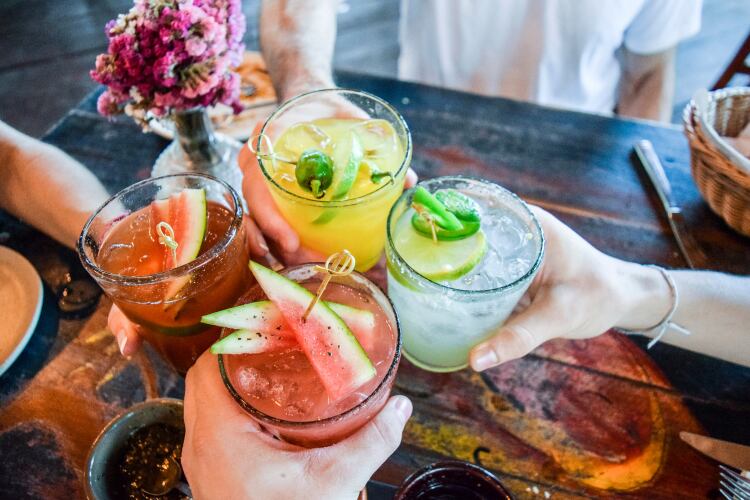Security of supply for food and beverage ingredients
Combined with the energy crisis and climate change, the supplier said that formulators and procurement teams will need to focus on the security of supply for ingredients and stay ahead of those challenges in the upcoming year. Doing so is especially vital when there is a global emphasis on responsible sourcing across multiple major industries, creating competition for highly sought-after ingredients and materials.
“Security of supply will be an ongoing problem,” said Natalia McDonagh, EMEA Head of Marketing and Technical Sales- Food Ingredients at Univar Solutions. “We see it is our job as a distributor to work as closely as possible with the manufacturers to make sure our supply chain is as uninterrupted as possible.”
Cost engineering
Navigating nutrition and affordability will continue to remain top-of-mind for consumers around the world. Value-conscious customers know the importance of macronutrients, vitamin and mineral intake, and eco-friendly products.
But faced with economic uncertainty, consumers will explore cost-cutting strategies. They will still be willing to spend on new experiences and products that promote personal wellbeing, however. The pressure is therefore on food brands and manufacturers to deliver this value while meeting broadening public expectations, the company said.
“Food and beverage brands must make nutritional information and satiety messaging transparent to help customers find the right balance between product selection and budget management. Cost engineering and reductions will be significant focuses for food formulators in 2023,” it said. “For manufacturers, employing cost engineering to deliver increased nutrition affordability and help budget-conscious consumers nourish themselves and their families should be a recipe for success.”
Clean label plant-based foods
The plant-based trend has not peaked, the company said. But consumers are increasingly demanding to know more about the nutritional values of plant-based products. Taste, texture and flavour all need to be looked at.
Commonly used ingredients in all plant-based meats – such as methylcellulose, gums, starches, and carrageenan – are primarily used as binding agents and texturizers but skew the "clean label" perception. Instead, the products made with these ingredients are categorized as "heavily processed." This categorization presents a new challenge for formulators, who must now find other solutions to better support clean label claims for the process involving how plant-based meat is made.
Univar’s cleaner alternatives to the texturizers and binding agents for plant-based meat include: citrus fiber, lentil flour (including garbanzo flour) potato flour and regelatinized corn starch. "Clean-label plant-based foods is something we've been putting some effort in educating our customers about some of the solutions we have,” said Kevin Hack, Global Vice President, Food Ingredients at Foodology by Univar Solutions. “These are things we are putting out there as substitutes for some of the more traditional texturisers like methylcellulose. These ingredients are less processed and more simply produced without as much energy of refining needed.”
Functional foods and beverages
During the pandemic, the demand for immunity-focused food and ingredients surged (with zinc seeing a 161% year-over-year growth in 2021 from 2020) and remains popular among consumers today, Univar said. It expects these products will likely see even further development in 2023 and serve consumers searching for sustainably healthy food options under microbiome health, plant-based, low-glycaemic, and nutrient-dense categories. Niche functional ingredients such as turmeric, collagen, and spirulina will continue to penetrate mainstream products such as beverages, snack bars, pastas, shake powders and mixes, cereals, and more.
Healthy indulgence foods
Consumers are still looking for permissible indulgences to help lift their mood while navigating turbulent times, but still keeping watch on their health simultaneously. When formulators can add healthy ingredients like fiber, protein, and probiotics to indulgence ingredients, it's a ‘game changer’. “If consumers see healthier offsets such as vitamin or fiber boosts in their indulgence foods, they are more inclined to purchase those products from brands that offer that transparency,” Univar revealed. “This is especially true when shoppers' behaviors are driven by convenience and products promoting even minimal health and wellness benefits.”
Food and beverage sustainability
The "better for me" approach to health and wellness has begun shifting to "better for us" as shoppers incorporate sustainable elements into every facet of their lives to protect planetary health and the nutrition of future generations. Consumers are looking to brands to help mitigate personal environmental impacts and reduce the overall consequences of products they're adding to shopping carts.
This includes a deeper focus on eco-conscious production processes, agriculture practices that preserve soil health, and eco-labelling designed to help inform consumers about the brand's sustainability efforts, such as restoring and rebuilding.
“Brands must start thinking critically about long-term strategies to strengthen their commitment to maintaining sustainable practices that benefit the planet, communities, and businesses,” Univar said.
“They'll also benefit from honest and open communication with shoppers – transparency that transcends food safety dialogue and instead focuses on connections with food and the community that manufactures or grows it.”
Alcohol-free beverages
One of the most rapidly emerging food and beverage trends includes mocktails and alcohol-free beverages, which are steadily gaining the same wider, everyday acceptance as decaf coffee.
“The challenge for formulators is that consumers will still expect the same flavourful experience delivered from non- or low-alcohol beverage options,” predicted Univar. “Brands and manufacturers will need to increase production to meet these demands, especially as sobriety, alcohol-free social gatherings and at-home DIY mixology continue to grow in popularity among younger consumers.”





